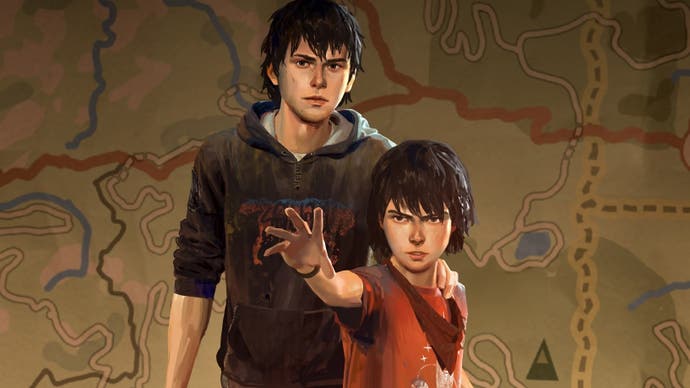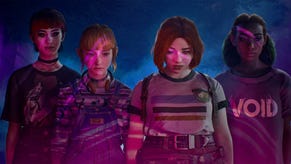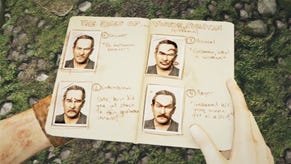How Life is Strange 2 challenged video game representations of homelessness
"We wanted to be as accurate as possible."
Homelessness is a constant and tragic backdrop to urban life. Walk through any major city and you'll find rough sleepers asking for change, tents pitched under overpasses, and charities trying to provide aid. Despite all these signs, and the rise in homelessness over the last decade, this tragedy is often ignored and overlooked on both a government and individual level, culminating in businesses even incorporating anti-homeless architecture into their designs, and laws that force rough sleepers out of certain areas.
A lot of games feature homelessness too, but these NPCs often suffer the same sympathetic dismissal as those on the streets. Several games trying to underpin the unpleasantness, hopelessness, or ruthlessness of their world sprinkle homelessness throughout their cities. But without any meaningful consideration, they are rarely any more than set decoration.
In 2016, Deus Ex: Mankind Divided let players explore a dystopian Prague filled with homeless beggars, there to emphasise the state of the world and its view of Augs. Like other NPCs wandering around Prague, some dispense tiny bits of dialogue if you try and interact with them, but others exist only to highlight the political climate. Players can't offer them change or even reply to them, they are nothing but a feature of the landscape, like the inanimate billboards that also tell the city's darker story. All the way back in 2010, the first game in the Metro series had homeless metro dwellers living alongside the apparently non-homeless residents of the metro. Although everyone was displaced by the nuclear holocaust above, there are still the haves and the have-nots in this world, with some seemingly extra homeless compared to others. At least these games allow you to give them a bullet or two.
The representation of homelessness is nearly always the same in video games. Robbed of any characterisation, agency, and in most cases empathy, they are an uncritical, seemingly unaware reflection of society's view of them. But that is beginning to change.
"We knew as soon as we started on [our game] that we wanted the player to experience what it is like to live on the streets, what it's like to be homeless," explains Jean Luc Cano, the game director of Life is Strange 2.
Unlike other games, Life is Strange 2 has worked hard over the last year to move away from the standard approach, and restore the humanity of society's most vulnerable. The episodic adventure game, whose finale released in early December, has players take on the role of Sean, a young homeless man, as he and his younger brother make their way across the United States. During the journey, the game challenges the player with several ordeals that rough sleepers may encounter.
"In real life when you have homeless people asking for change, you don't see them," says Cano. "There are a lot of people who have no money and it's become so common you barely notice, so we wanted to be as accurate as possible. It's a fucking tough world for the homeless. No one sees you, yet everyone judges you, and we really wanted to capture that feeling."
Throughout Life is Strange 2 the brothers encounter seemingly normal members of society who treat them as less than human. The game works to present the homelessness situation from a perspective most of us have never had to endure.

"We did a lot of research into what it is like to live in the streets," Cano explains. "How do you grab food? How do you protect yourself? How do you protect from the cold? We spoke with charities who gave us a lot of advice and watched some amazing and heartbreaking documentaries as well."
While other games relegate the homeless to the side-lines, Life is Strange 2 goes out of its way to bring them into the spotlight; whether that's through the research the team does or the effort the voice actors put into their performance. It forces the player to examine homelessness as an issue and wrestle with the apathy society has for the people that slip through the gaps. For the finale, Square Enix teamed up with Centrepoint, a UK-based homelessness charity, to try to provide more support and awareness for the homelessness crisis.
"Of course this scenario isn't completely transferrable," explains Becca Cousins, the senior direct marketing officer at the charity. "But I think because when you play the game you feel so responsible, it really helps educate the player with the hardships of living on the street. You have to make these really tough decisions that you may have been privileged enough not to make in real life, so it gives you this small window of understanding into some of the difficult decisions others have had to make, like should I steal the chocolate bar or do I go hungry? Or do I sleep in the street, or sleep in a stranger's house?"
And the charity is hoping that Life is Strange 2 is the beginning of homelessness representation improving in video games.
"There are still some challenges, but I think it's getting better," Cousins tells me. "Sometimes people feel homelessness is caused by the victim and there's not always sympathy in the underlying causes. Most of what we see is family breakdown or abuse at home or fleeing violence, and something like video games could really help people understand and empathise with these underlying causes."
Other games have touched upon centralising homelessness in the past, but this is often hidden behind analogies and based in fictional societies. In Horizon: Zero Dawn you are essentially homeless, but while the game uses that to develop Aloy's character, it doesn't reflect the vulnerability in its robot dinosaur-killing power fantasy. Your struggle to survive is because of a murderous AI, not a world that doesn't care about you. Beyond Two Souls is probably the best mainstream example of games tackling homelessness besides Life is Strange 2. But Cano still think it doesn't quite hit the mark.
"I think the homeless scene in Beyond: Two Souls works well, but from my point of view it's too nice," he says. "The other homeless people are all very nice and trusting with Jodie, and the city isn't really against them. There's barely anyone there."
Most games use homelessness as window dressing, a prop to show the sour state of the world the players are fighting to fix. But homelessness is a common problem in our world, without evil secret societies ruling from the shadows or nuclear holocausts. Homelessness is a simple and tragic by-product of the society we live in, and we often ignore it. Video games could be a tool to help us understand and empathise with the most vulnerable in society. Life is Strange 2 is a good start.











